The Best Full-Body Exercises For All Levels Of Gym-Goer
Work your upper body, lower body and core in one fell swoop with these beginner, intermediate and advanced exercises
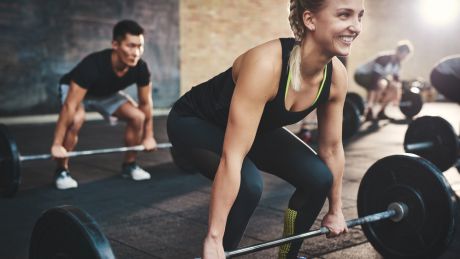
To accomplish any fitness goals it is necessary to run through a variety of exercises as part of your gym routine – and not just because doing the same exercise over and over again would get boring after a while. However, if you are short on time and want moves that hit multiple muscle groups in one go, turn to these full-body exercises.
We asked Toby Lynes, The Fitting Rooms Gym personal trainer, to name and explain his favourite beginner, intermediate and advanced full-body exercises, and we’ve added in a few of our favourites as well. Despite the name, these exercises don’t work every single part of the body, but you can be sure they’re going to hit several muscle groups and many of them provide a cardiovascular workout as well.
Beginner Full-Body Exercises
Burpee
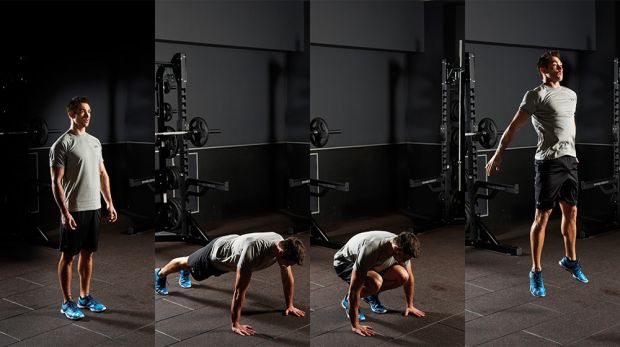
“This is a great cardiovascular exercise,” says Lynes, “because it requires you to move your whole body from a horizontal position into a vertical position as quickly as possible. The movement requires a lot of muscle groups to work in co-ordination, including your shoulders, abdominals and lower body, especially your quads and calves. In order to power all these muscles, your heart rate will increase, which also means you’ll burn a lot of calories.
“From standing, place your hands on the floor by your feet, then jump your legs back so you end up in a press-up position. Jump your legs back in so your knees are close to your chest, then jump up and raise your hands above your head.”
Medicine ball slam
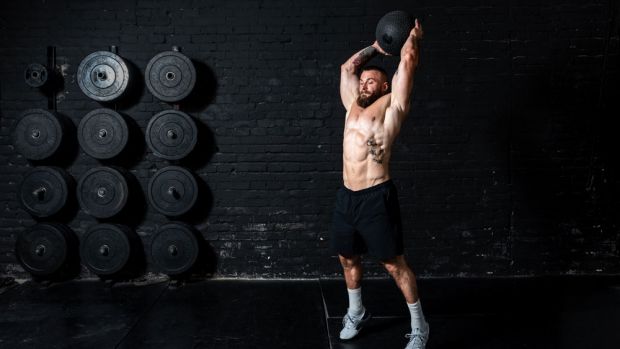
“This is a fantastic movement for developing power, strength and speed,” says Lynes, “as well as burning a lot of calories. The muscle groups worked in this exercise are mainly your abdominals, quads, glutes, calves, back and shoulders.
“In a wide stance with your feet either side of the ball, squat down to pick up the ball then stand up on tiptoes and raise the ball above your head as quickly as possible. When you have fully straightened your arms overhead, throw the ball straight down as hard as you can.”
Dumbbell Romanian deadlift
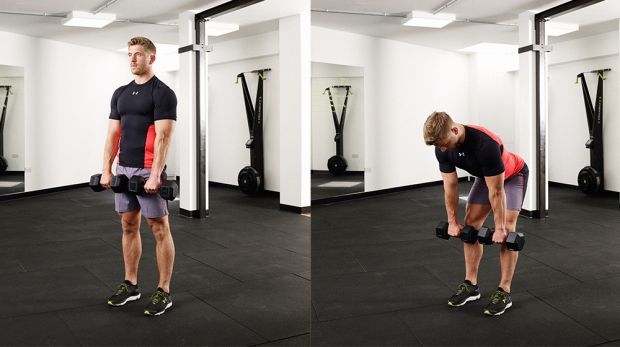
“This is a great exercise to strengthen your posterior chain – the muscles that run from the back of your neck to the back of your ankles – especially the hamstrings, glutes and back muscles,” says Lynes. “Hinging at the hip under the load is particularly good at improving your hamstring mobility as well as increasing strength.
Get the Coach Newsletter
Sign up for workout ideas, training advice, reviews of the latest gear and more.
“Stand holding dumbbells with your palms facing towards you. Draw your shoulder blades back and down, tuck your pelvis under into a neutral position and brace your abdominals. While maintaining this posture push your hips backwards with your knees slightly bent, lowering the weights in front of your legs. Don’t allow your spine to round. As soon as you feel your spine starting to curve, stop the movement and return to the top by bringing your hips forwards.”
Rowing
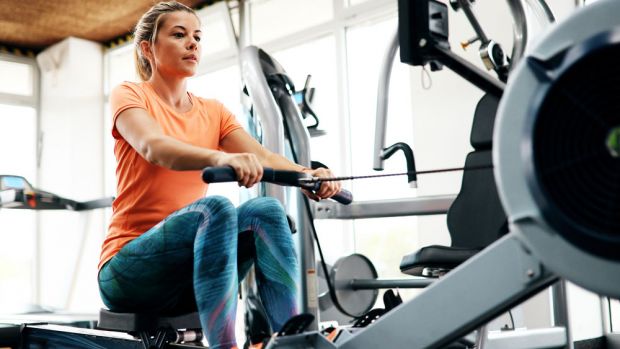
If your definition of “full-body exercises” includes the heart and lungs, rowing might be the best full-body exercise of all. Throughout the rowing action you’ll hit the legs particularly hard, but your core and upper body don’t get off lightly – plus your heart will start pumping pretty much the moment you sit on the machine. On top of this, you can do either low-intensity steady session (LISS) or HIIT on a rower easily.
Crab walk
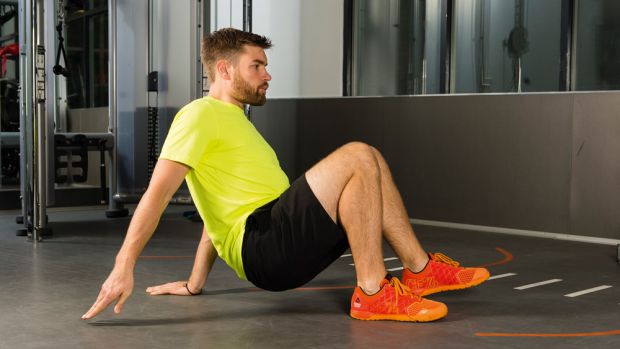
It might not be the most glamorous move you can do in the gym, but the crab walk is a simple and effective way to hit a number of muscles, including your shoulders, triceps, quads, hamstrings and core. Sit on the floor with your feet planted in front of you. Put your hands just behind your glutes, shoulder-width apart, and raise your hips off the ground. Then move around on all fours for a minute. We bet you’ll be surprised by how much your muscles are burning after 60 seconds of scuttling.
Jumping jack
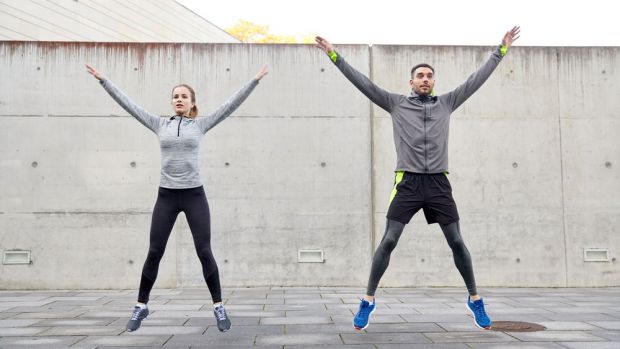
Whether you prefer to call them jumping jacks or star jumps, this PE classic is well worth including in your training. The jack works your arms, legs, core and shoulders while getting your heart pumping as well, and of course requires no equipment at all. Stand with your feet closer than hip-width apart and your arms extended and by your sides. Jump and spread your legs while raising your hands above your head. Land on your toes with your legs spread wider than shoulder-width apart, then jump and bring them back under you while lowering your arms.
Bear crawl
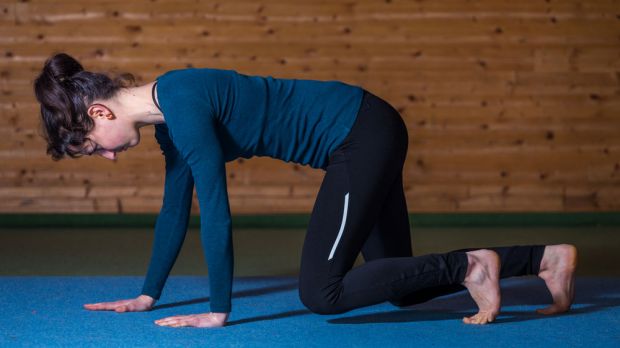
If you’re looking to find full-body moves, crawls are a great place to start, and the bear crawl might be the best of them all. It’s tough on the core, shoulders and quads in particular, and if you speed up the movement it can also produce cardio benefits as well. To do the bear crawl, get on all fours supported by your hands and toes and move forwards and backwards, as space allows, without letting your knees touch the ground. Throw in some sideways crawling as well to work your muscles from even more angles.
Lunge to press
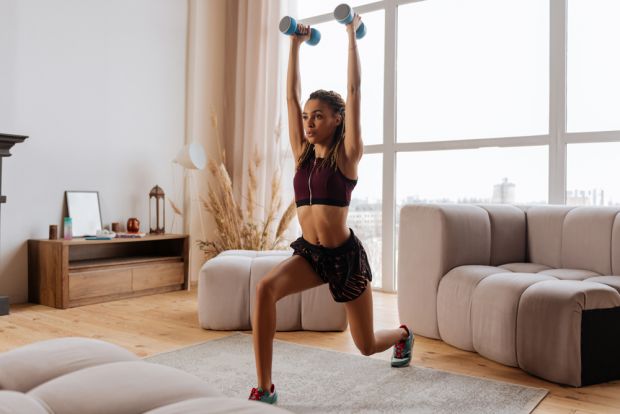
Pressing is great for your upper body. Lunging is great for your lower body. Combine them in one fluid movement and you have a fantastic full-body exercise that also improves your balance and co-ordination.
Stand holding dumbbells by your shoulders. Take a large step forwards and lower until both knees are bent at 90°, but don’t let your back knee touch the ground. While holding that position, press both dumbbells above your head and then lower them slowly back to your shoulders. Push through your front foot to return to standing. Alternate the leg you lunge with for each rep.
Farmer’s Walk
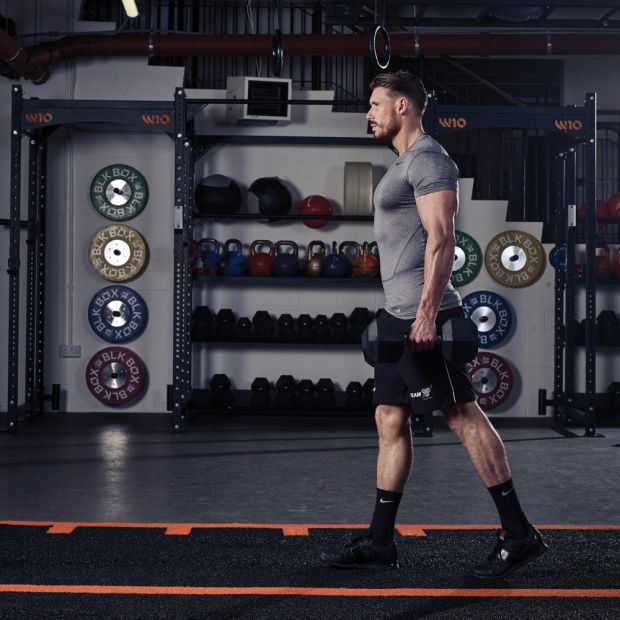
A great exercise for beginners, but one which can carry you a long way, all the up to World’s Strongest Man in fact. As a standing exercise this will really work your core, as well as your legs, forearms and upper back if done for an extended period of time.
If you’re in a gym dumbbells or kettlebells are your best best, although a barbell or trap bar will also work. If you find yourself in a dedicated strongman facility make for the farmer’s walk handles.
The move is as straightforward as you’d think – walk with your arms by your sides holding heavy weights – but since you’re loaded up, it’s wise to nail your posture. Stand upright, straighten your back, keep your shoulders tight and your chest proud.
Getting the weight right is difficult, but as you’re holding them by your sides in a natural position you have the option to try something slightly heavier. Aim for something like 20kg for dumbbells or kettlebells.
Intermediate Full-Body Exercises
Chest-to-floor burpee
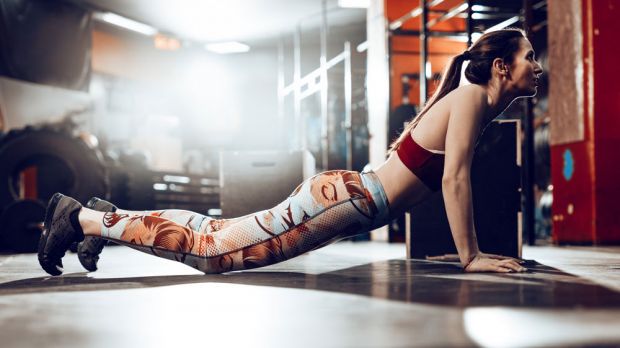
“Add a press-up to the movement to include your triceps and chest in the muscle groups being worked,” says Lynes.
“From standing, place your hands on the floor by your feet and jump your legs back so you end up in a press-up position. Perform a press-up, making sure your chest touches the floor, then jump your legs back in so your knees are close to your chest. Jump up and raise your hands above your head.”
Dumbbell hang clean and press
“The hang clean and press can be very useful for developing power when the load is heavy,” says Lynes, “but also can be used in a HIIT session to get the heart pumping and burn calories. The main muscle groups worked are the quads, hamstrings, glutes, calves, shoulders, back and abdominals.
“The starting position looks like the halfway point on the way down of a deadlift – back flat and hips pushed back, with arms hanging down, hands holding the dumbbells with palms facing you. From there you stand up as quickly as possible, shrugging your shoulders up to your ears and going up high on tiptoes. This movement creates the momentum to enables you to lift the dumbbells from your sides to your shoulders. Then press the dumbbells above your head, bring them back down to the shoulders and return to the starting position.”
Turkish get-up
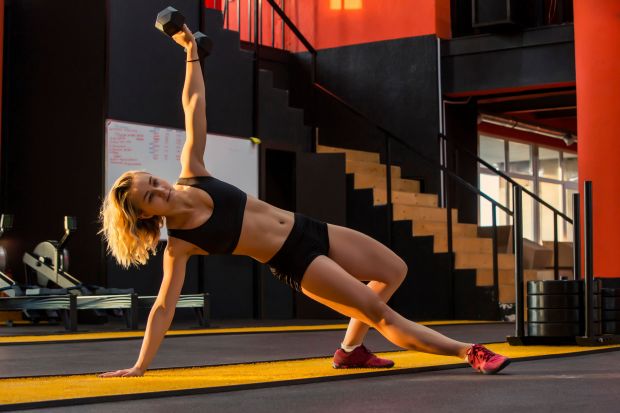
It’s a little-known fact that every time you stand up in Turkey, you have to do so in a very particular sequence while holding a kettlebell. That’s why everyone is so strong there. The Turkish get-up is an outstanding exercise that shows how a simple movement can be hugely effective: you really are just moving from lying down to standing up while holding a weight, and yet it strengthens muscles all over the body.
Broadly speaking, you hold a kettlebell in an outstretched arm above you while bending one leg underneath you and then pushing up to standing, but we recommended reading our full guide to the exercise for a more detailed description of the movement.
Wall balls
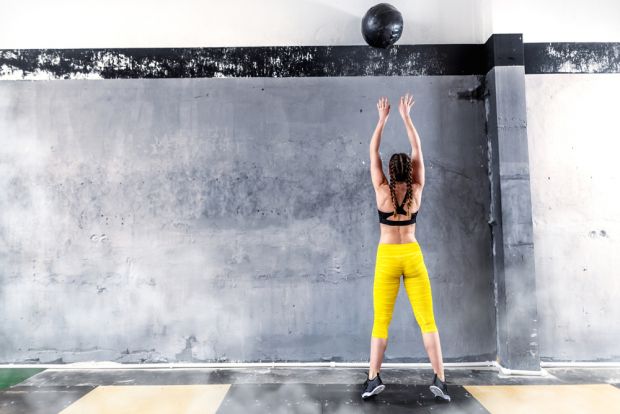
This dynamic move is perhaps the only one that can challenge the burpee for the title of most exhausting exercise. Even with a light medicine ball the demands on your upper and lower body and your cardio fitness are high.
Stand facing a wall, close enough that you can catch the rebounding ball. Hold a medicine ball by your chest and drop into a squat. Push up explosively through your heels and use that momentum to throw the ball with both hands at a spot on the wall approximately 3m up. Catch the ball and begin the next rep immediately.
Crocodile walk
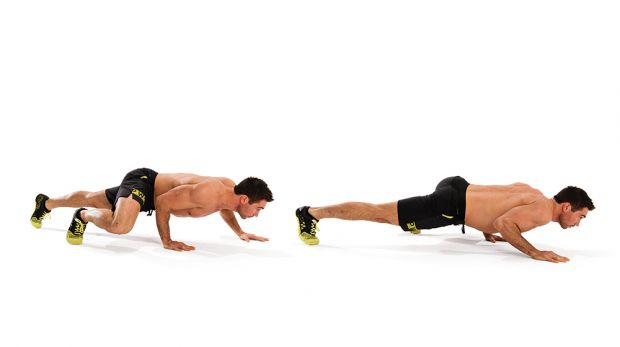
From the top press-up position, lower yourself close to the ground, keeping your body in a straight line. Begin crawling by bringing one knee up towards the elbow on the same side while simultaneously moving the opposite arm forwards. Focus on keeping your posture the same throughout.
If you want to mix things up, reverse the movement so that you’re crawling backwards.
See related
- Add Strength And Size With This Full-Body Workout Plan From Shaun Stafford
- Full-Body HIIT Workout For Your Lunch Break
Advanced Full-Body Exercises
Man maker
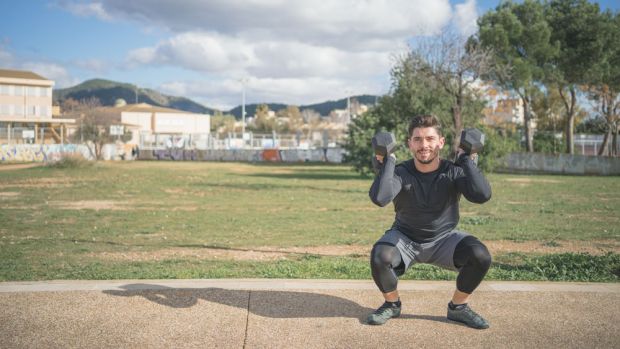
“A man maker consists of a variety of movements strung together,” says Lynes. “When the dumbbells are heavy this exercise challenges your strength, in particular your core, back and shoulders, as well as your cardiovascular system.
“Stand holding dumbbells by your sides. Bend your legs to place the dumbbells on the floor by your feet but don’t let them go, and jump your legs back so you end up in a press-up position. Perform a press-up, then row one dumbbell to your chest at a time while holding the press-up position with the rest of your body. Jump your legs back to your hands and perform a clean by standing up quickly, shrugging and lifting the dumbbells to your shoulders. Then go into a deep squat with the dumbbells resting on your shoulders. When you stand back up, use the power in your legs to create momentum to press the dumbbells overhead. All of that is one rep.”
Deadlift
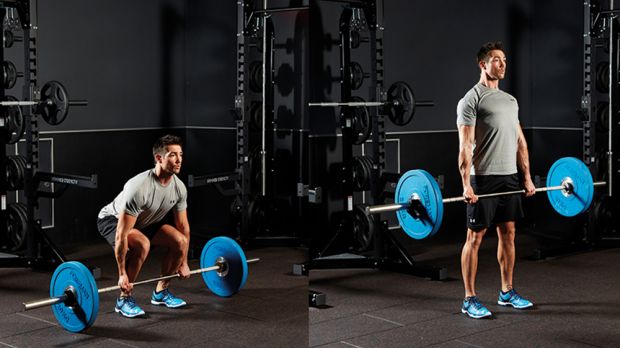
“This is one of the best compound exercises for developing strength through your posterior chain,” says Lynes.
“Stand with your toes under the barbell. Bend your knees, lean over and take hold of the bar with your hands just outside shoulder-width apart and your palms facing you. Push your chest out so your spine is in a straight line and straighten your lower back. Breathe in and brace your abs. Pushing through your feet and keeping your spine straight, lift the bar until you are standing in an upright position. Breathe out at the top, then breathe in and brace your abs again. Keeping your lower back straight and chest out, lower the bar slowly back to the floor.”
Just make sure you have nailed the form before you think about seriously upping the weight, because too many don’t follow that advice and do themselves a mischief. Our deadlift exercise guide should help, but there’s no substitute for an expert checking your form in person.
Medicine ball over the shoulder
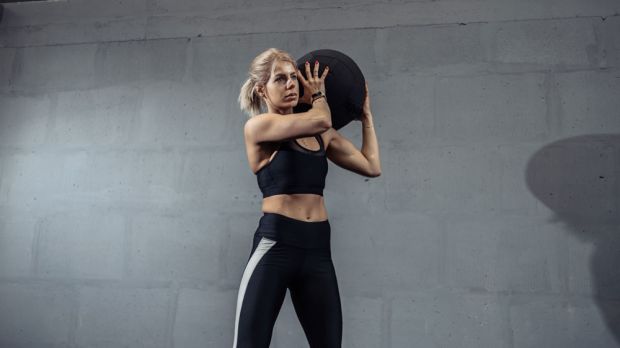
“This exercise is advanced because it requires the individual to learn how to brace correctly through the ‘corset’ of the body – all the core muscles including the lower back – in a rounded or flexed spine position,” says Lynes, “whereas a deadlift has a straight spine position.
“Start in a wide stance with your feet either side of the medicine ball. Squat down as low as you can – don’t worry about trying to keep a straight spine. Hook your hands, wrists and forearms around the ball to get a firm grip. As you pick up the ball, drive your hips forwards, and push up onto your toes to create the momentum and power to enable you to throw the ball over your shoulder. Turn around and repeat, throwing the ball over your other shoulder.”
Barbell thruster
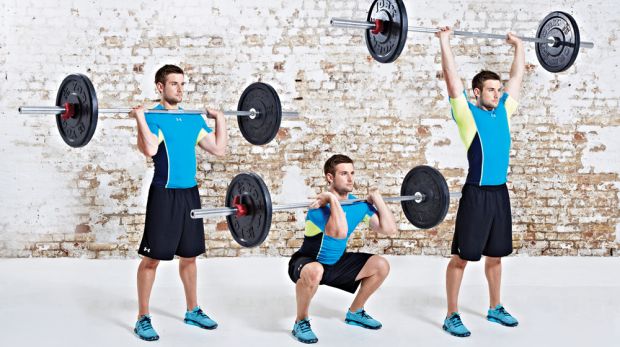
“This exercise combines a front squat and an overhead press,” says Lynes. “It’s great option to add to a HIIT session and it challenges your lower body and shoulders.
Hold the bar in front of your throat so it lies across your collarbones with your palms facing up and elbows pointing forwards. Squat to a good depth then explode up, pushing through your legs, and press the bar above your head. As the bar comes back down, start to lower into your next rep.
Kettlebell snatch
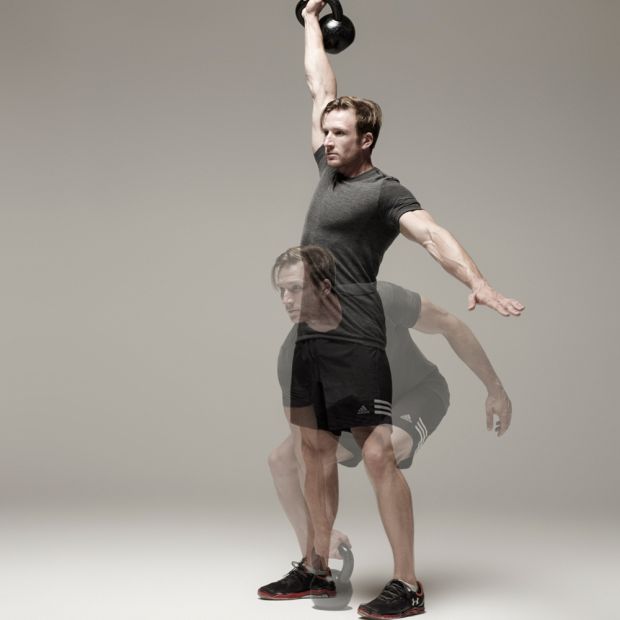
The kettlebell snatch is an excellent exercise that works the whole body hard, but it’s also technically difficult. Make sure you follow this form guide closely to avoid the risk of injury and maximise the benefits of the move.
Stand with the kettlebell on the floor in front of your feet. Hinge at the hips to reach down and grab the handle. Swing the kettlebell back between your legs to create momentum. Drive your hips forwards and straighten your back to lift the kettlebell. Once it reaches chest height, flip your wrist under the kettlebell so it rests on the back of your wrist as you push it up above your head until your arm is extended. Reverse the movement to bring the weight back to the start.
Burpee pull-up
For this exercise you’ll need a pull-up bar, a bit of floor space around it and a lot of determination, because this isn’t easy. Stand beneath the pull-up bar, drop your hands to the ground and jump your feet back so your body is in the top press-up position. (If you want, now is the time to do a press-up to make it even harder.) Jump your feet back to your hands, then jump up and grab the bar with an overhand grip and pull yourself up. Once your chin is above the bar, you can count a rep.

Nick Harris-Fry is a journalist who has been covering health and fitness since 2015. Nick is an avid runner, covering 70-110km a week, which gives him ample opportunity to test a wide range of running shoes and running gear. He is also the chief tester for fitness trackers and running watches, treadmills and exercise bikes, and workout headphones.









